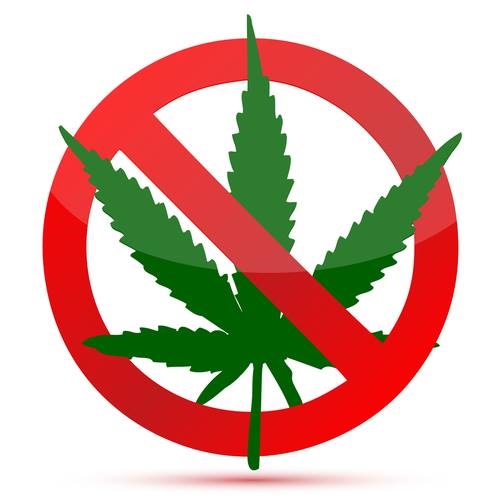Pueblo, Colorado : A Cautionary Tale
/Pueblo, Colorado-- The story of Pueblo is a cautionary tale of what happens when County commissioners try to resolve their financial difficulties with tax revenue from marijuana. This small city with a population of 120,000 is a former steel mill town which fell on hard times. It ranks #2 in the state for poverty.
Seventy percent of the counties in Colorado opted out of Amendment 64, which commercialized and legalized marijuana. The city of Pueblo banned retail marijuana, but the county of Pueblo began to give licenses to marijuana grows and retail stores. Pueblo County commissioners saw marijuana as an opportunity to fill empty factories and create jobs. They made the decision against the wishes of most of the county’s 160,000 residents.
An influx of 15,000 migrants moved to Pueblo for the drug, and some looking for jobs in the industry. Pueblo now has a tremendous homeless problem. Tent villages are housing newcomers who can’t afford or find homes. Social services, soup kitchens and emergency rooms are stressed to the breaking point. So far in 2016, 5800 people have asked the local homeless center for assistance, a 49% increase since 2013. Approximately one-third of county residents, 67,000 are on Medicaid.
Concerned citizens started a campaign, Citizens for a Healthy Pueblo, raising concerns about the social costs of public health, traffic safety, crime and teen use. The campaign succeeded in getting two initiatives on the ballot (Prop 200, Prop 300) which will give the citizens a voice on whether or not to allow the marijuana industry to continue to do business in the county. A “yes” vote on both initiatives will end Pueblo’s marijuana drug trade. See the Citizens for a Healthy Pueblo Safety Fact Sheet.
The medical community recently held a press conference, announcing that237 physicians signed a statement supporting a “yes” voteon 200, 300. Physicians who spoke at the event detailed some of the health risks coming from marijuana use in the community. Dr. Steven Simerville, a pediatrician and Medical Director of St. Mary-Corwin Hospital, reports that 7-10% of the babies born are testing positive for THC. Simerville highlighted the scientific findings that THC exposure is harmful to children’s brains. It impacts the brain function in areas of: spatial reasoning, I.Q, learning, memory. It can also result in behavioral issues and poor decision making skills. Simerville cited a dramatic increase in attempted suicides, a fivefold increase since legalization. Every person who attempted suicide in the community, except one, tested positive for THC.
Dr. Karen Randall an emergency medicine doctor affiliated with several of the Pueblo hospitals said that many of the newcomers to the area are coming to the emergency room with multiple and severe illnesses. Specifically, they are seeing increased incidences of diabetic ketoacidosis, hypertensive and psychiatric emergencies. Dr. Randall believes the Pueblo community could be on the verge of a public health disaster. She explained that those living in tent camps are at risk for the same communicable diseases found in refugee camps: flu, pertussis, cholera, tuberculosis. Randall, who previously worked in Detroit for a large city hospital as disaster coordinator, says she fears the Pueblo community health system is not equipped to deal with such an outbreak.
The black market is growing alongside the legal industry. Sheriff’s office finds that foreign cartels from Laos, Argentina, Cuba and Russia are now operating in Pueblo. The cartels are buying or renting homes and setting up illegal grows. Law enforcement has busted sixty illegal grows in 2016, there are 1500 other documented grows –also illegal. Sheriff Kirk Taylor is also retooling his tracking methods to account for the increasing crimes associated with marijuana . Currently Pueblo has the highest murder rate in the state, at 11.1 per 100,000.
“Those living in the rural areas are scared,” reports Paula McPheeters of the Citizens for a Healthy Pueblo. “The marijuana grows are despoiling the land and draining the water aquifers. Squatters are growing marijuana and crime is increasing.” McPheeters says the community is being overwhelmed by outsiders moving in and taking over. Gang activity is increasing, drive by shootings, petty crime, auto theft are now big problems in a once peaceful community.
“Pueblo County now has 20 retail marijuana stores, compared to our 18 McDonalds, Starbucks and Walmart stores combined,” says McPheeters. The county took in 3.5 million in tax revenue from the marijuana industry, but McPheeters says, “The social costs to the community could easily be upwards of two times that amount.”
The biggest concern to those seeking to pass the ballot initiatives is the increase in youth drug use. Thirty one percent of youth age 12-17 are using marijuana in Pueblo County, three times the national average. Tragically, 12% have tried meth-amphetamine or heroin. The community has inadequate drug treatment facilities, so when teens get into trouble with addiction it is difficult to get them help.
Aubree Adams, a mother whose 8th grade son started using infused marijuana products, explained, “Soon after legalization became law, the schools were flooded with marijuana-laced candy and sodas that were indistinguishable from regular sweets and sodas. Our son was in and out of hospitals for marijuana-induced psychosis, suicide attempts.” The family sought help locally for his addiction. They tried a number of different programs to no avail. She finally found help from MomsStrong.org , founded by other mothers who lost their children to marijuana addiction or suicide. Today, her 16 year old son must live out of state to get away from the marijuana culture and to participate in an effective treatment program. He is living with a host family and plans to go to a special high school with others recovering from drugs. His mother, who volunteers for Citizens for a Healthy Pueblo says she has been harassed, bullied, physically threatened by the local marijuana dealers for her activism in favor of the ballot initiative.


